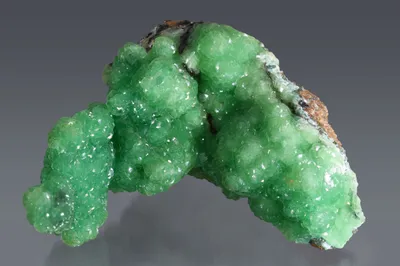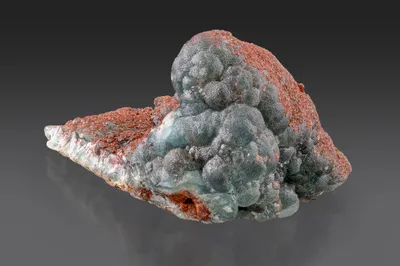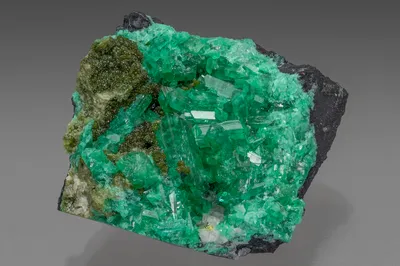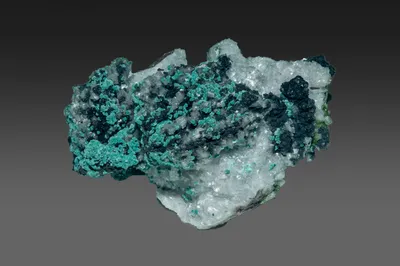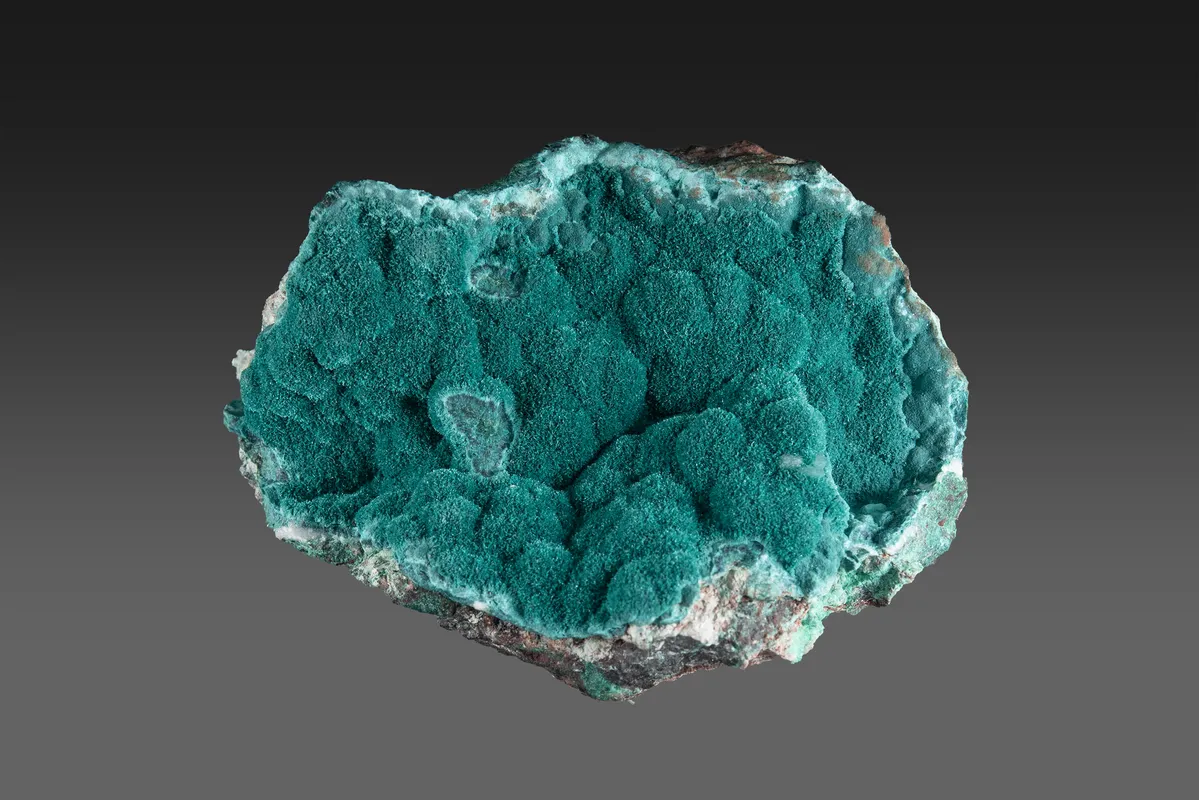
Image Credit: Malcolm Southwood
Mineral Species
Rosasite
Type Locality
No
Composition
(Cu,Zn)2(CO3)(OH)2
Crystal System
Monoclinic
Status at Tsumeb
Confirmed
Abundance
Somewhat rare
Distribution
First, second and third oxidation zones
Paragenesis
Supergene
Entry Number
Species; TSNB304
General Notes
Biehl (1919) was the first to document the occurrence of paraurichalcite (= rosasite) at Tsumeb. He studied poorly defined earthy crusts and botryoidal masses of malachite from Tsumeb that he believed to have been altered by the action of zinc-bearing solutions. Based on chemical analysis, he identified two varieties: paraurichalcite-I and paraurichalcite-II. Lauro (1937) showed paraurichalcite-I to be identical with rosasite and Palache et al. (1951) noted that, while further study was needed, paraurichalcite-II and another variety, cuprozincite (not reported from Tsumeb), "… may prove to be identical with rosasite or to be highly zincian varieties of malachite".
Klein (1938) made no mention of rosasite (or paraurichalcite). The Klein Collection, however, includes two specimens of rosasite (Klein #492 and #493) both of which are attributed to 9 Level but mis-identified as malachite in the Klein Collection catalogue (Klein Collection catalogue; unpublished; Klein family archive).
Strunz et al. (1958a) listed rosasite from both the first and second oxidation zones. Strunz and Tennyson (1967) added that rosasite forms "mixed crystals" with malachite.
Geier (1973/1974) noted that rosasite is uncommon in the second oxidation zone where it "… may occur as an individual mineral but is more commonly found as zoned intergrowths with malachite".
Bartelke (1976) observed that rosasite forms "… fine-grained crystal lawns…" distinguished from malachite by a lighter, blue-green colour and that it is commonly associated with calcite, cerussite, duftite and willemite.
Pinch and Wilson (1977) observed that rosasite "Forms bluish green mammillary crusts and velvety botryoidal coatings associated with malachite, quartz and cerussite. The Cu:Zn ratio is 1½:1. Also forms superb pseudomorphs after azurite". They went on to describe two varieties:
- "Zn-Rosasite (high Zn-var.) (Zn,Cu)2(CO3)(OH)2 This pale green to whitish, copper-poor, zinc-rich variety has been described [by Strunz 1959] in which the Cu:Zn ratio is less than 1:1."
- "Paraurichalcite (high Cu-var.) (Cu,Zn)2(CO3)(OH)2 This deep blue-green variety reportedly has a Cu:Zn ratio of 2:1 and may form part of a series to malachite. … Paraurichalcite has been observed as pseudomorphs after azurite in attractive groups and also as botryoidal crusts."
Keller (1977a) listed the following minerals found in association with rosasite: willemite (very common); smithsonite (common); cerussite, duftite, malachite (less common); adamite [zincolivenite], mimetite, mottramite (rare associates) and wulfenite (a very rare associate). He placed rosasite in one of his "Type I" paragenetic sequences of minerals forming from solutions between pH 6-8:
I/6: willemite(i) >> smithsonite(i) >> (rosasite + duftite) OR mimetite >> willemite(ii) >> cerussite >> smithsonite(ii)
Keller (1984) described rosasite as "… fine fibrous radiating masses or sheaf-shaped aggregates of typical blue-green colour".
Roberts et al. (1986) used material sampled from an exceptionally well-crystallised specimen of Tsumeb rosasite from the Pinch Collection (now at Harvard University; MGMH 2020.7.2038) to obtain an indexed XRD pattern, an electron microprobe analysis and a structure solution. They showed that rosasite is monoclinic and gave an empirical formula for the study specimen of (Cu1.18Zn0.82)(CO3)(OH)2.
Gebhard (1999) recorded that rosasite was known "… from the very early days of mining as greenish-blue spheres and attractive pseudomorphs after azurite" but that the pseudomorphs were only found between the surface and 100 m depth (4 Level). These so-called "double pseudomorphs" comprise complete or partial replacements by rosasite of malachite that is already pseudomorphous after azurite.
From the third oxidation zone, from 44 Level, Gebhard (1999) described distinctive crystals of rosasite (to 2 mm) imparting a blue colour to the quartz in which they are embedded. Gebhard also noted the occurrence of blue rosasite on lemon-yellow willemite, rosasite associated with chudobaite and blue-green crusts of rosasite with blood-red cuprite, all from the third oxidation zone.
Rosasite is typically part of the first oxidation zone paragenesis in which the rare mineral otavite is found.
Associated Minerals
azurite; calcite; cerussite; chudobaite; chrysocolla; cuprite; dolomite; duftite; koritnigite; linarite; malachite; mimetite; molybdofornacite; mottramite; olivenite; otavite; philipsburgite; quartz; smithsonite; tsumcorite willemite; wulfenite; zincolivenite
Pseudomorphs
Rosasite has been reported to form pseudomorphs after the following minerals: azurite (rare); cerussite (rare); galena (rare); malachite (common, replacing malachite already pseudomorphous after azurite).



